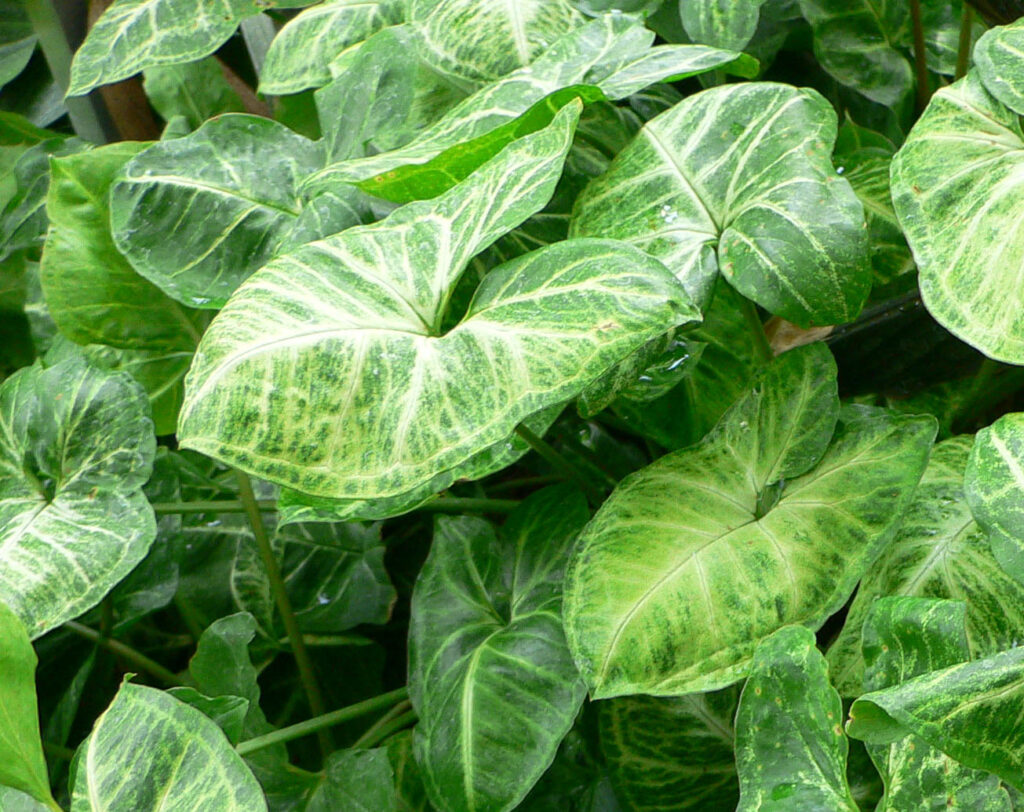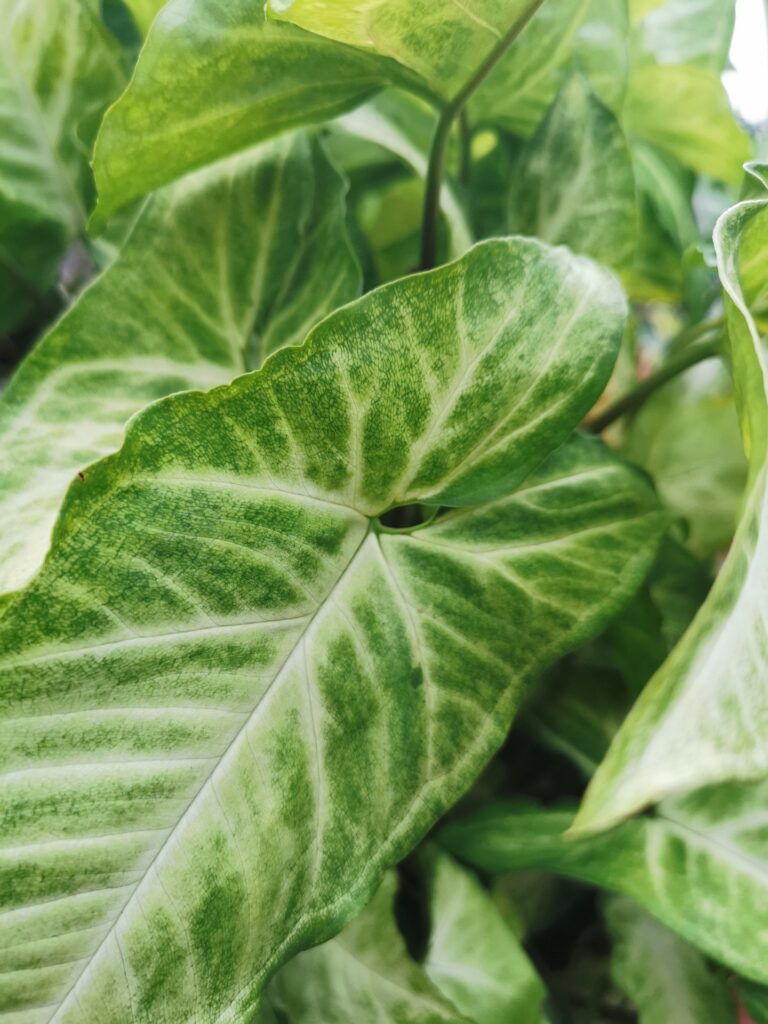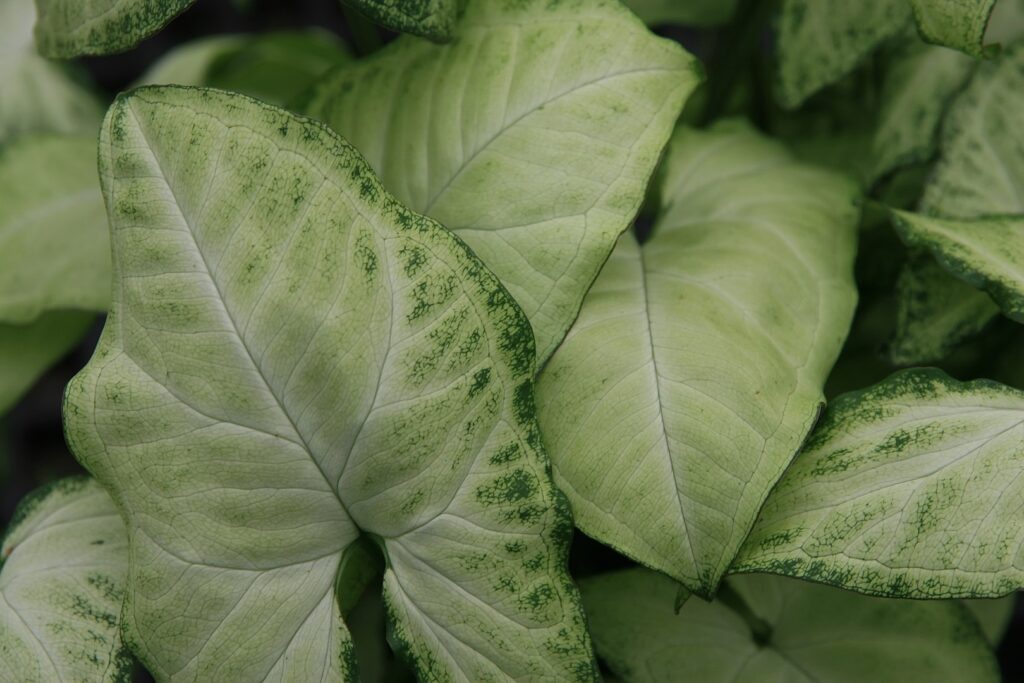
Syngonium podophyllum, frequently called “arrowhead vines,” make excellent houseplants because they’re easy to care for. They’re tolerant and hardy indoor plants that can thrive under a variety of light conditions.
Sometimes called “Goosefoot” because of the leaf shape, and one of their most unique characteristics is that they offer design flexibility. You can grow them as a bushy houseplant or train them up a trellis or moss pole.
Arrow vines are also popular with Feng Shui enthusiasts for their elemental symbology.
Syngonium enjoys the Royal Horticultural Society’s Award for Garden Merit.
Syngonium Benefits
- Removes toxic gases from indoor air
- Increases home humidity for improved air quality
- Grows lush with just moderate care
- Versatile growth habit
- Provides an exotic touch to any interior
- Can be grown outdoors in Zones 10 through 12
Syngonium Description
Arrowhead vine, Syngonium podophyllum, is one of the easiest of the aroid houseplants to acquire and care for. In fact, they grow so vigorously, that in subtropical areas of the United States, they are sometimes deemed a low-threat invasive species. They have become naturalized in parts of Florida, Texas, and Hawai’i.
In these warm and humid environments, Syngonium often climb up the trunks of trees, and you can duplicate this tropical jungle effect with the use of moss poles or climbing was.
Syngoniums offer a wide range of leaf variegation depending on the cultivar and light conditions. Markings in cream may differentiate the cultivars, and some may offer pinkish or yellow variegation.
Flowers, if any, are small and greenish-white, although very young and indoor specimens normally do not bloom.

Tips for Plant Care
This plant is highly toxic to mammals and cats in particular. Keep out of reach of children and pets. If you are sensitive to oxalic acid, wear gloves when repotting.
For optimum health, provide a pot only slightly larger than your root mass for transplanting. Make sure the container has adequate drainage holes. Use potting soil with plenty of organic matter.
Once transplanted into the new container, water in well. Afterward, water whenever the top of the soil feels dry. Mist daily.
Place your plant in a comfortable indoor spot that receives anything from very low light to bright shade. They prefer bright, indirect light, but will tolerate lower light conditions. The amount of light can affect the variegation on the leaves, and direct sunlight can scorch them.
Highly variegated cultivars require bright, indirect light, but plainer types are more tolerant to low-light spaces.
If you wish your arrowhead to climb, provide a support as soon as the plant begins to vine.
Fertilize during the late spring and summer every two to four weeks with a dilute plant food solution.

Buy Syngonium podophyllum Here
| Species Name: | Syngonium podophyllum |
| Common name(s): | Arrowhead vine |
| Defining Characteristics: | Tropical foliage featuring large arrow-shaped leaves and vines that stretch and climb trees. |
| Temperature requirement: | Tropical plant, sensitive to temperatures below 50°F |
| Watering frequency: | Outdoors, water regularly to establish young plants, and then twice or three times a week as needed. Indoors, keep soil moist and mist frequently. |
| Lighting: | Partial or dappled shade, medium light indoors. |
| Soil type: | Rich well-draining soil, high in organic matter |
| Growth rate: | Fast growth rate depending on conditions. |
| Height: | From 3 to 6 feet tall when trained to climb |
| Origin: | Central and South American tropics |
| USDA Hardiness Zone: | 10 to 12, (9 with protection) |
| Toxicity Notes: | All parts of the plant contain calcium oxalate crystals. Highly toxic to cats |
| Common Problems: | Bacterial blight and stem rot |
| Additional Notes: | Fertilize every two to four weeks during spring and summer |
